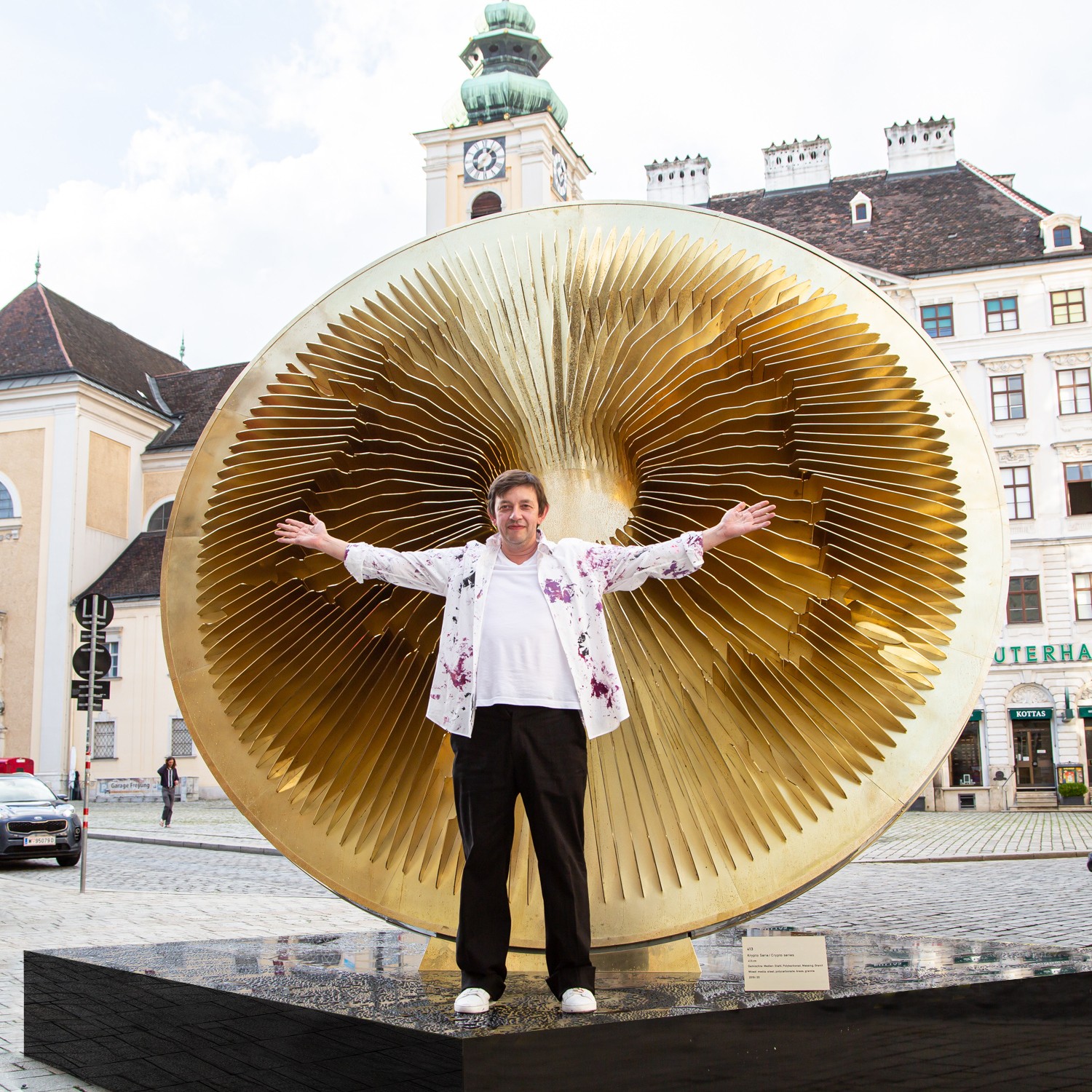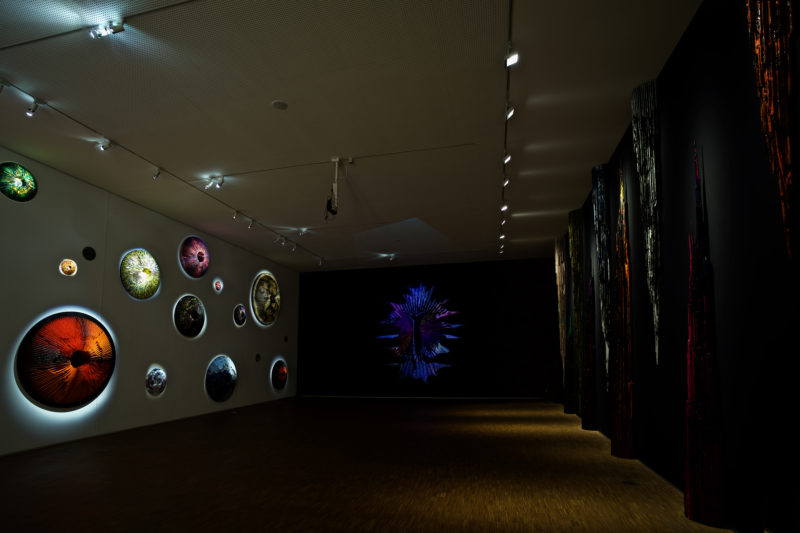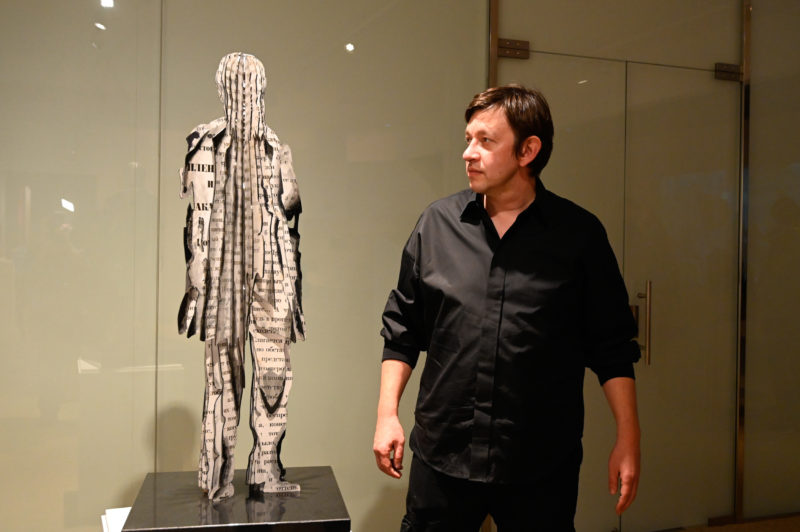Vasily Klyukin, a successful Russian sculptor with an impressive portfolio of international projects, including the Venice Biennale, came into the art world after years in the financial sector and later in real estate development. Today, he is represented by the respected Sorokko and Simon Lee galleries and doesn’t lack attention from curators and collectors. In 2021, his work was exhibited at the Kunstforum Wien, and his latest exhibition, which included around 300 sculptures, was held at the Osthaus Museum Hagen in Germany, known as the first museum dedicated to contemporary art. In an interview with Fine Art Shippers, Vasily Klyukin spoke about his artistic journey, his love of complex structures, and human sins.
Artist Talk: Vasily Klyukin on the Love of Construction and Human Sins
I'd like to begin by discussing your transition from the business field to the art world. Was this change a sudden one, or was it an idea that you'd been thinking through over several years?
Vasily Klyukin: I started a gradual transition from business to art in 2009, during the global financial crisis. The shift from active management to passive investments spanned about five years. My first steps in the art world were organizing exhibitions for artists across various countries and hosting art events. I also tried my hand at developing architectural concepts, which eventually evolved into sculpture.
As you began to involve yourself in art projects as an organizer and producer, I assume this sparked your desire and shaped your vision as an artist. Which media or genres interested you at the time, and how did these interests subsequently influence your artwork?
In my childhood and teenage years, I was attracted to the classics, impressionism, and post-impressionism. Later, I developed an interest in surrealism and eventually discovered contemporary art. I was particularly fascinated by sculpture for its form. In fact, I had been creating art pieces for quite some time, although I primarily considered them as crafts.
In 2013, I embarked on what can be considered my first art project. It involved creating architectural design concepts. I created over a hundred of these concepts, and most of them were published – some in a book, while others were made available online. The book was released by the Italian publisher Skira in 2014. For its presentation, I constructed ten models and then shaped and cast them in bronze. These models marked my debut in sculpture.
Why did you choose sculpture as your medium? Was it because you wanted to explore the possibilities of three-dimensional space?
Firstly, I have a deep passion for construction. Throughout my life, I have constructed a wide range of things, from everyday consumer goods to advanced iterations of existing products and complex devices. There's an intricate structure within each of my sculptures. Take, for example, one of my pieces– a disc adorned with 144 petals fixed to the interior. To make this structure functional, a frame, typically of steel or aluminum, is necessary. All the elements are concealed within and sealed by a rim and a back wall. Another reason I prefer sculpture over painting is that it offers almost an infinite number of perspectives. A single object can present dozens, sometimes hundreds, of different perspectives.
As you mentioned, your works are quite complex technically. Do you make them manually, or do you use manufacturing facilities?
The process of creating sculptures involves several stages. It starts with creating a digital design that allows me to view and adjust the form from all angles. Once I'm satisfied with the design, I move on to 3D printing a small prototype, usually 4 to 11 inches high.
The challenge arises when scaling this small model up to a large sculpture. Here, I have to keep in mind how the different elements of the sculpture will work together. Although I usually handle the initial design calculations myself, I subsequently hand off the project to specialized organizations for further development and refinement, following my instructions. It is especially important for big outdoor works, for instance, a 30-foot steel sculpture. Since this involves public safety, structural calculations have to be done by a licensed architectural bureau. Professional designers have the expertise and specialized software to accurately calculate seismic and wind loads, sail area, and other crucial safety factors that I, as an artist, may not be able to handle.
I would like to talk more specifically about two of your works, "In Dante Veritas" and a project dedicated to Anna Akhmatova. Is it a coincidence that these artworks are literature-centric, or were you specifically commissioned to create them? Or were you interested in these specific personalities?
The first sculpture I created using that technique was dedicated to Immanuel Kant. I was invited by the former mayor of Kaliningrad to produce a public art piece for the 2018 World Cup. This Russian city, formerly Prussian Königsberg, is where the philosopher lived his entire life and wrote all his works. At the time of the invitation, I happened to be rereading Mikhail Bulgakov's novel "The Master and Margarita," and one of its most renowned quotes, "Manuscripts don't burn," kept resonating in my mind. Inspired by this phrase, I decided to combine this image from the novel with the figure of Kant. This marked the beginning of a series of sculptures. Subsequently, I sculpted Einstein, whom I greatly admired for his theory of probability.
Next, I created a beautiful female figure, which was later sold at a charity auction. It was during this event that I encountered an art dealer who suggested that I balance the sweetly angelic look of the sculpture with something more “demonic.” Rather than creating a straightforward illustration of this concept, I turned to Dante's "Divine Comedy" and its portrayal of sins. For example, a sculpture portraying wrath. It is strong, terrifying, like people consumed by rage, but at the same time it’s chained–punished by its own fury; it has already torn a hole in itself and cannot stop.
"In Dante Veritas" was initially showcased at the Russian Museum in 2018 and subsequently at the Arsenale Nord during the 2019 Venice Biennale. Later on, I was invited to participate in two group exhibitions at the branch of the Russian Museum in Malaga, Spain, which both had a literary theme. One was dedicated to the poetess Anna Akhmatova, while the other focused on Fyodor Dostoevsky.
Finally, I would like to ask you a philosophical question. What does art mean to you, and how do you personally define it?
To me, art is the act of creating something beautiful, solely for the sake of its beauty, without any other ulterior motives. It is a process of crafting something intellectually, visually, and emotionally engaging and carrying positive energy within it.
Interview by Inna Logunova
Photo courtesy of Vasily Klyukin
Images in the order of appearing: -413. Kunstforum, Vienna. Photo by Krisztian Juhasz -Mind Space Exhibition. Osthaus Museum Hagen, 2022-2023. Photo by Joseph Kiblitsky -In Dante Veritas, Venice Biennale, 2019. Photo by Sergey Romanov -Crime and Punishment. Malaga, Spain. Photo by Fredy Torra



